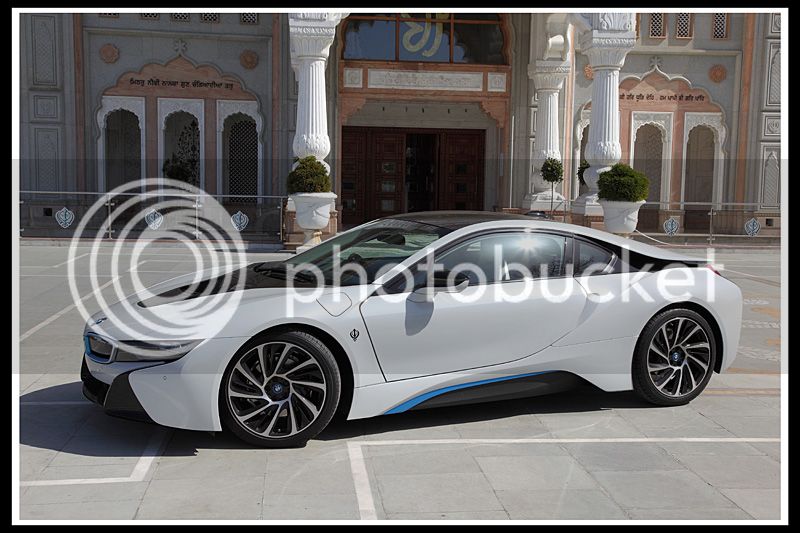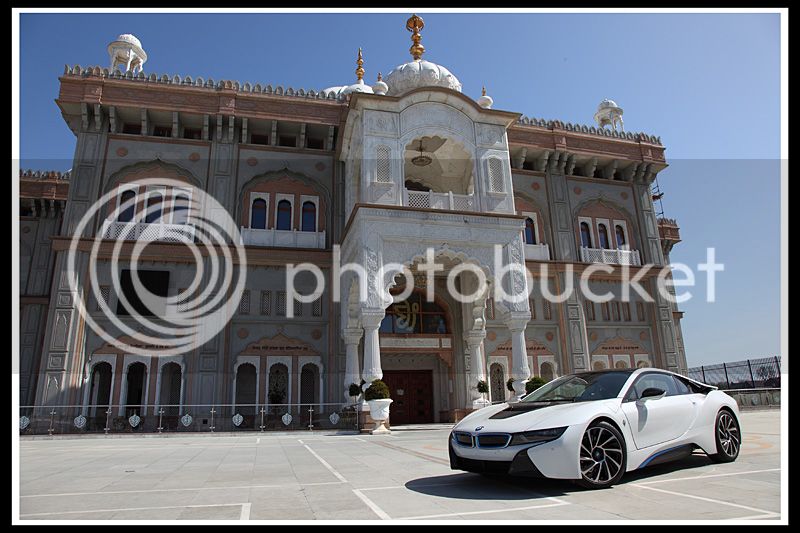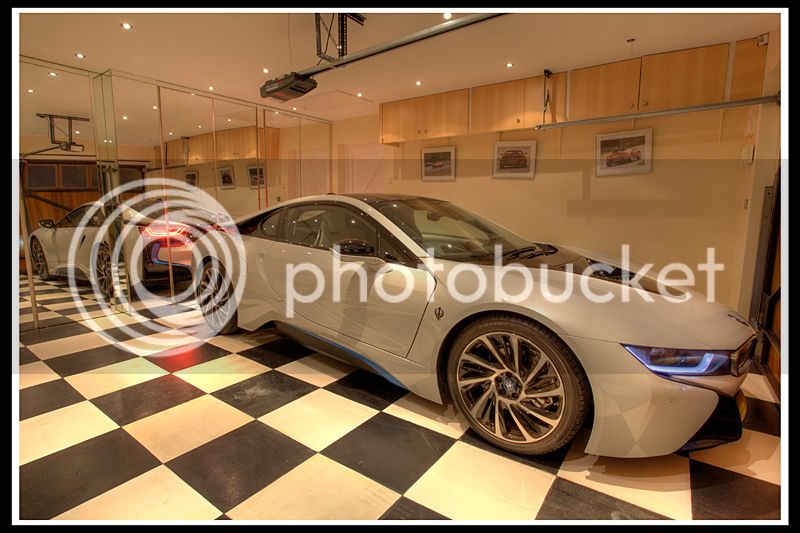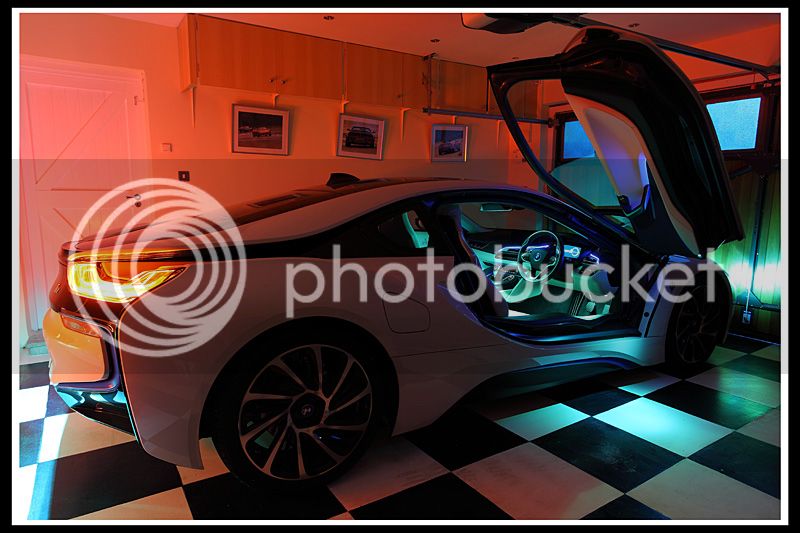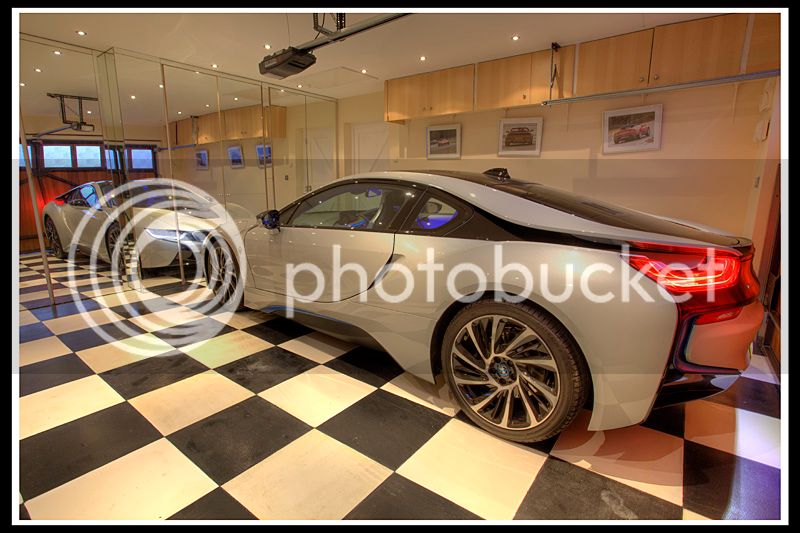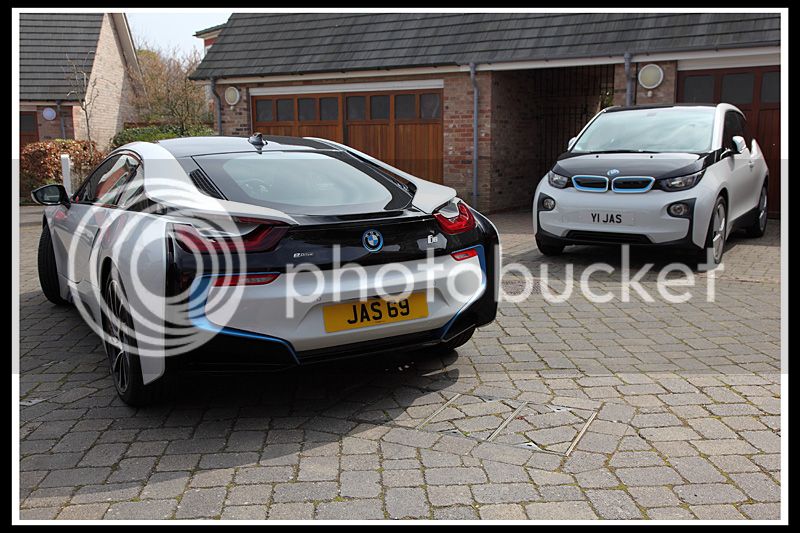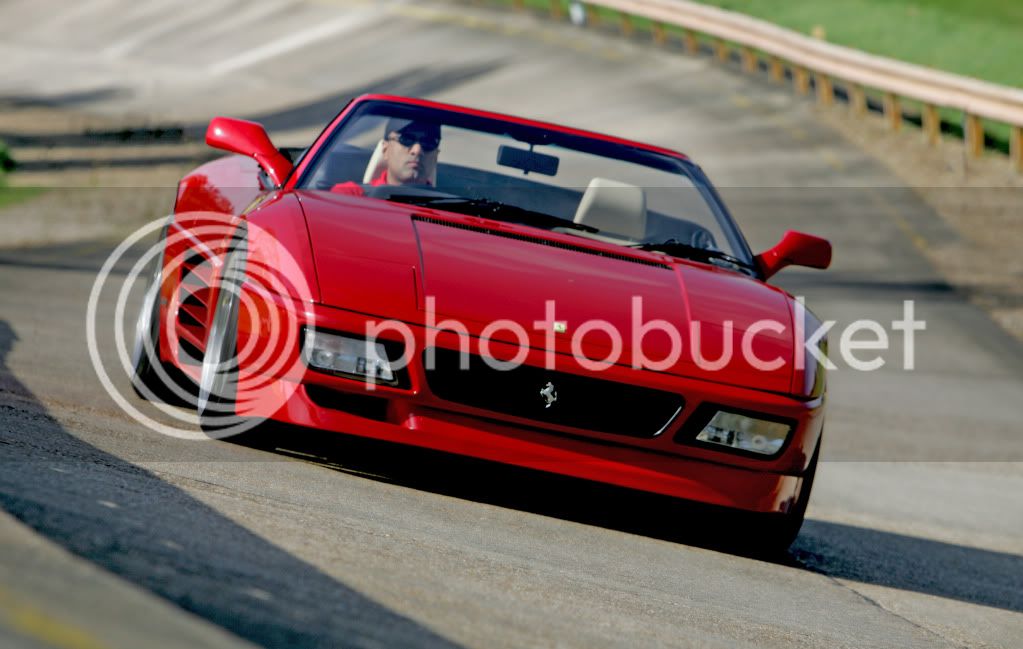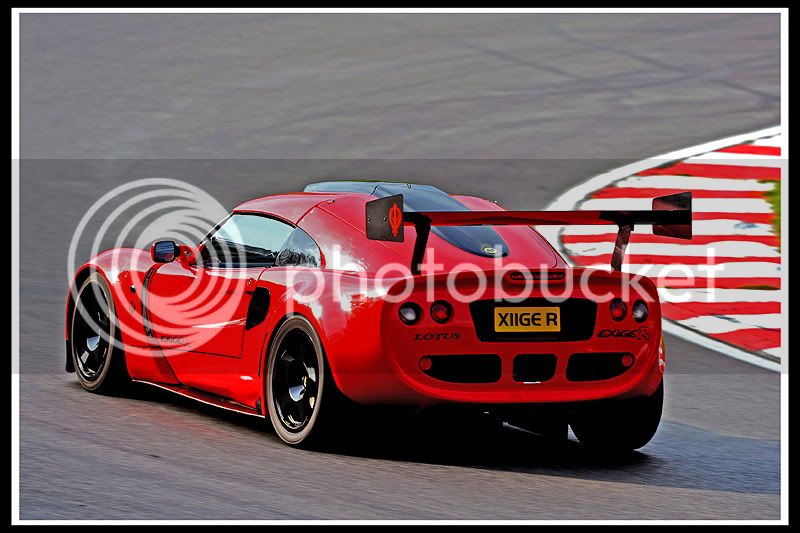(cross posted from SELOC)
I first saw the BMW i8 at the Canary Wharf Motor Expo a few weeks ago. I don’t pay attention to BMWs, so had missed all news of this car, and assumed it to be a concept car when I saw it. It was stunning to look at, and was the one drawing the crowds. I was stunned when the BMW staff told me it was a street car, available to buy!
I took a few pictures, thought it was amazing to look at, but thought no more of it. But it had planted a seed in my mind, and yesterday I went to BMW to take a look at one and spend some time behind the wheel. The car was so new it only had 100 miles on it. It had all the options except laser headlights £8,000). It had the optional wider wheels, front and rear.
First the claimed stats. The car costs £100k, which is surprisingly low considering the technology and build quality of it (or £120k with all the options). In short, it has a full carbon fibre passenger cell, with aluminium chassis and is a mid-engined 4WD car. It weighs just under 1500kg and does 0-60mph in 3.8 seconds (0-62 in 4.4). Yet it delivers 134mpg on the standard combined test cycle!
In the metal, it looked stunning again. Like something from the future. This time I could of course sit inside it to get a proper look, and the interior is also futuristic yet classy and feels good quality, although noticeably not as luxurious as Ferrari or McLaren interiors. The interior is airy and offers great all round visibility. The cockpit is a gadget lover’s idea of heaven however.
Getting in and out was easy, for an S1 Exige owner. The average driver might complain a little however, as the car is low and the sill is wide. There is a lot of exposed carbon fibre visible as you enter the car, which looks fantastic.
I set off in full electric mode, and found that the car was almost completely silent. It was very similar to the original Tesla I drove three years ago, based on the Elise chassis. It had instant torque and plenty of power and acceleration for normal driving. The steering was extremely light at crawling speeds, but weighted up nicely when travelling at speed. There was however no sense of feedback from the wheel, although it felt extremely precise.
I could quite comfortably and happily drive the i8 solely in electric mode, and found it to be extremely relaxing as it was so quiet. I found myself almost whispering when speaking in the car, due to how quiet it was. It was a front wheel drive car in this mode. The ride was rather on the firm side, but very much to my liking.
“Comfort mode” was the second mode I tried, and here the car again stays fully electric most of the time but very unobtrusively and instantly uses the petrol engine, which drives the rear wheels. The transition is seamless and is based solely on throttle input. All controls are “fly (drive) by wire”, but work so well you do not feel disconnected. The car becomes much quicker accelerating, and the engine sound is heard. It is not loud or obtrusive in any way though.
For much of the drive I stayed in “sport mode”. In this mode the petrol engine is always on, and the car is always in 4WD. Throttle response was noticeably sharper, the ride firmer and the engine much louder. When I switched to full manual mode, my favourite mode, the engine noticeably blips on gearchanges and the engine sounds very much like a big flat 6, rather than the massively turbocharged 1.5 litre 3 cylinder it actually is. It sounds great, but not too loud. However, my frame of reference is quite skewed here as I am comparing it to McLaren and Ferrari engines – both of which of course sound a lot better and louder.
The car accelerates very quickly indeed, and there is no sense that it is 4WD, or indeed hybrid. If I hadn’t known, I would have assumed it was a mid-engined supercharged 3 litre six cylinder. There is no hesitancy or lag whatsoever, and the engineers have clearly performed miracles in marrying the three engines to work together (there is a small second electric motor in the rear, assisting the petrol engine, to avoid turbo lag).
I pushed the car (safely) to its adhesion limits, and it understeered. It would not respond to attempts to control attitude via the throttle, with its electronic stability systems curbing any excesses smoothly but effectively – unfortunately. I imagine I could only get it to oversteer if on a track or similar, and severely provoking it. Grip levels are high, but not as high as 911, McLaren or Ferrari cars I have driven. It is very easily controllable and tame when the limit is exceeded, unlike the others though – and especially unlike an Elise or Exige.
On narrow, very twisty roads, the car was a lot of fun and easy to drive. Very responsive and precise, and reminiscent of an Esprit, but without the turbo lag. It was extremely quick through bends and felt every inch an exotic sports car. It corners completely flatly and inspires confidence. It is of course nowhere near as communicative, fun or fast as my Exige – but its broad range of capabilities far exceeds any Lotus, or indeed any other car I know of.
Only the LaFerrari, McLaren P1 or Porsche 918 are superior overall – I assume, not having driven them. However, one could buy six i8 cars for the price of one LaFerrari, and the i8 is a daily usable car just like a 911, so there is really no comparison. I felt the rear seats were actually usable, albeit not suitable for long distances for adults. It has slightly more rear seat space than a 911.
The car has regenerative braking, and the best compliment I can pay the i8’s brakes is that the system is transparent, and the driver does not sense its presence. The lift off drag effect feels the same as it would in a large engine conventional car.
Visually, the car drew crowds everywhere. An even bigger effect than I have previously experienced in other exotic cars, perhaps matched only by the attention the F40 drew. Some of that is due to its gull wing doors. Doubtless some of it was due to it being so new and cutting edge, and this will lessen as people see more of them. Not that very many will be built – I recall reading that BMW are making only 600 per year globally.
It has faults, and the one that annoyed me most was that the gear indicator is rather small on the dash. I like that to be displayed big. The car has a HUD (head up display) which only the driver can see, projected on the windscreen just under the driver’s sightline, but this does not display RPM or gear. I made a strong recommendation to BMW to effect a software update to add that facility.
The understeering on the limit is a small negative, but can be adjusted just like the Elise S2 with wider front wheels if an owner was determined to change that behaviour. Grip levels are high, but could easily be increased with softer tyres, as the ones on it are designed for economy. Storage space is low overall, but infinitely greater than on my Exige!
The car does not feel, or look, like a BMW. Nor does it drive like one. Only the badging and grille lets you know it is a BMW.
Having driven many far more expensive cars, I am still surprised at how little the i8 costs. It genuinely feels and looks like a £200k exotic sports car, and I honestly believe that had this exact car rolled out of Maranello sporting Ferrari badging, it would have sold like hot cakes at £300k.
I have driven faster cars, and more exciting cars – the very best being the Radical RXC last year. But the best overall car I have driven, considering its range of capabilities (speed, acceleration, handling, power delivery, technology, and efficiency) is the BMW i8, and by quite some margin.
It is so good I am severely tempted to buy one in fact, which is an odd turn of events as I have never looked twice at any BMW or considered owning one in the past. The car drives, feels and looks like it is ahead of its time, and has driven in through a time-warp from the future.
